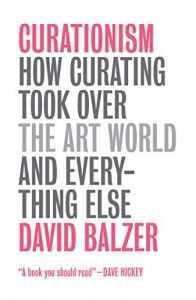I 99eBooks è una directory di eBook. Cerchiamo e classificato intorno alle eBooks Web per te!
Tutti i diritti riservati. I libri e libri elettronici sono di proprietà dei rispettivi proprietari.
Curationism
Now that we 'curate' even lunch, what happens to the role of the connoisseur in contemporary culture?
‘Curate’ has become a buzzword, applied to everything from music festivals to artisanal cheese. Inside the art world, the curator reigns supreme, acting as the face of high-profile group shows in a way that can eclipse the contributions of individual artists. At the same time, curatorial-studies programs continue to grow, and businesses are adopting curation as a means of adding value to content. Everyone, it seems, is now a curator.
But what is a curator, exactly? And what does the explosive popularity of curating say about our culture’s relationship with taste, labour and the avant-garde? In this vibrant and original book, David Balzer travels through art history and around the globe to explore the cult of curation, where it began, how it came to dominate museums and galleries, and how it emerged at the turn of the millennium as a dominant mode of thinking and being — from superstar curator Hans Ulrich Obrist’s war with sleep to Subway’s ‘sandwich artists.’ Recalling such landmark works of cultural criticism as Tom Wolfe’s The Painted Word and John Berger’s Ways of Seeing, Balzer asks whether curationism has finally reached its own limits, where its widespread success has paradoxically led to its own demise.
‘Curate’ has become a buzzword, applied to everything from music festivals to artisanal cheese. Inside the art world, the curator reigns supreme, acting as the face of high-profile group shows in a way that can eclipse the contributions of individual artists. At the same time, curatorial-studies programs continue to grow, and businesses are adopting curation as a means of adding value to content. Everyone, it seems, is now a curator.
But what is a curator, exactly? And what does the explosive popularity of curating say about our culture’s relationship with taste, labour and the avant-garde? In this vibrant and original book, David Balzer travels through art history and around the globe to explore the cult of curation, where it began, how it came to dominate museums and galleries, and how it emerged at the turn of the millennium as a dominant mode of thinking and being — from superstar curator Hans Ulrich Obrist’s war with sleep to Subway’s ‘sandwich artists.’ Recalling such landmark works of cultural criticism as Tom Wolfe’s The Painted Word and John Berger’s Ways of Seeing, Balzer asks whether curationism has finally reached its own limits, where its widespread success has paradoxically led to its own demise.


















